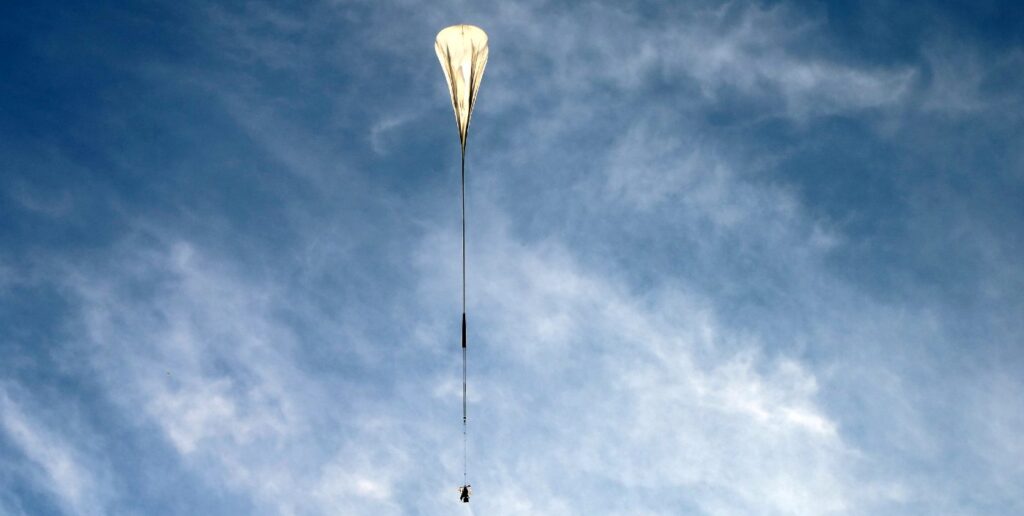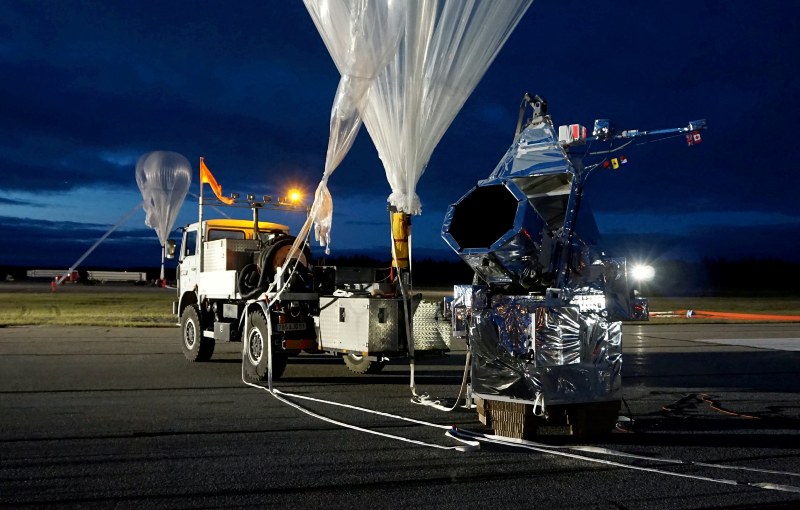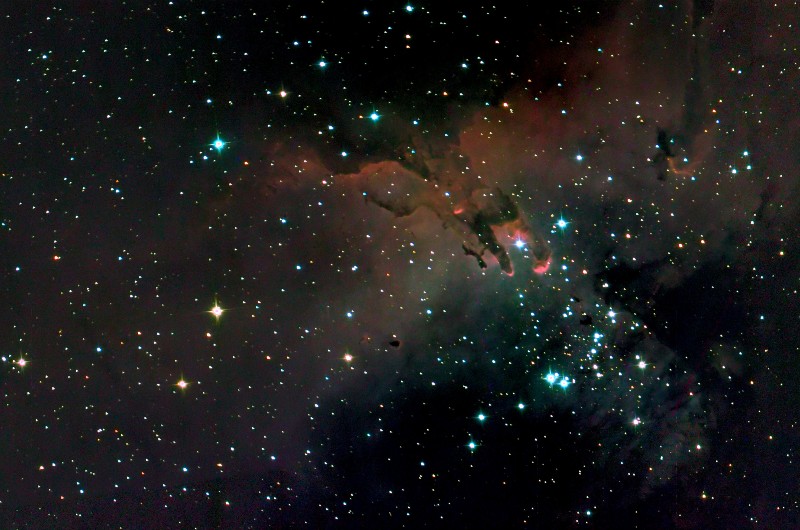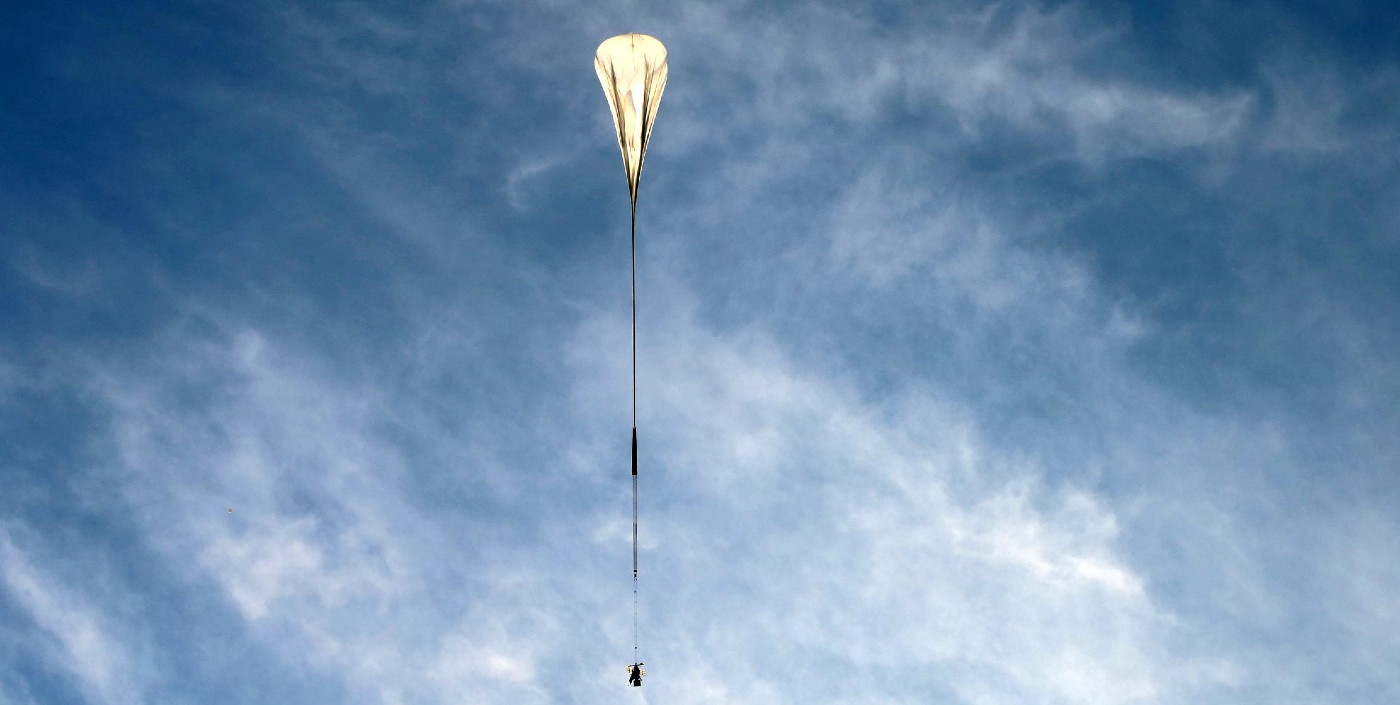
The world’s biggest balloon, the size of a soccer stadium, is to be sent to the edge of space.
The instrument—named Superpressure Balloon-borne Imaging Telescope, or SuperBIT—will fly above 99.5% of Earth’s atmosphere next April and will carry a wide field telescope to rival Hubble, but at a fraction of the cost. That’s according to the British scientists behind the ambitious project.
SuperBIT will study dark matter, the invisible ‘glue’ that makes up 80 percent of all the stuff in the universe, which astronomers map by the way it bends rays of light, in a technique known as gravitational lensing.
Professor Richard Massey of Durham University, said: “Cavemen could smash rocks together to see what they’re made of. We are going to use SuperBIT to look for the ‘crunch’ of dark matter. It is the same experiment. You just need a space telescope to see it.”
A collaboration between NASA, the Canadian Space Agency, Durham, Toronto, and Princeton universities, SuperBIT cost £1.5 million ($2 million) to build compared to the £3.6 billion ($5 billion) for NASA’s Hubble.
And the international team are confident SuperBIT’s high-resolution images will be just as impressive.
Light from a distant galaxy can travel for billions of years before reaching our telescopes. In the final fraction of a second, it has to pass through Earth’s swirling, turbulent atmosphere—and our view of the universe becomes blurred. Observatories on the ground are built at high altitude sites to overcome some of this. But only placing a telescope in space fully escapes the effect. SuperBIT changes that.
It has a mirror half a meter in diameter and is carried to an altitude of almost 25 miles (40km) by the huge helium balloon. The mission will also be much less expensive than a typical machine-based alternative, and doesn’t take as long to plan.

A final test flight in 2019 demonstrated the telescope’s extraordinary pointing stability. And NASA recently developed ‘superpressure’ balloons that can contain helium for months.
In April 2022, SuperBIT will take off from Wanaka on New Zealand’s South Island—carried seasonally stable winds.
It will circumnavigate the Earth several times, imaging the sky all night, then using solar panels to recharge its batteries during the day.
Mohamed Shaaban, a PhD student at the University of Toronto, said: “New balloon technology makes visiting space cheap, easy, and environmentally friendly.
“As well as building a space telescope, our team has successfully tested all sorts of electronic and mechanical systems that could be used in future satellites.”
Its relatively cheap cost could even make it possible in the future to have a fleet of space telescopes offering time to astronomers around the world.

CHECK OUT: NASA Helicopter Sends Stunning Photos of Martian Landscape from 33 Feet Up – LOOK
One thing the instrument will test is whether dark matter slows down during collisions. No particle colliders on Earth can accelerate dark matter. But this is a key signature predicted by theories that might explain recent observations of strange-behaving sub-atomic particles called muons.
SHARE This Far-Out News With Pals on Social Media…




















